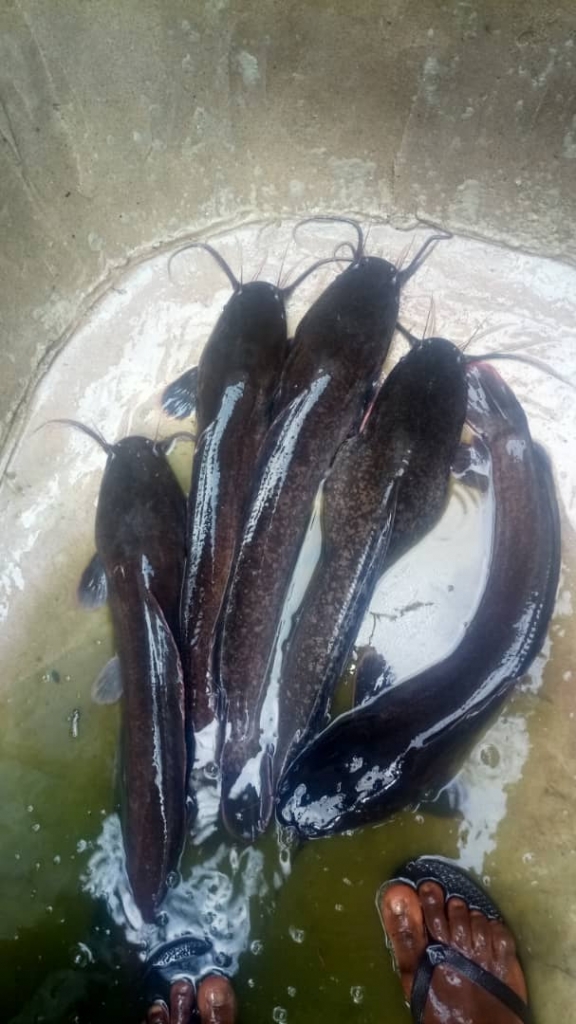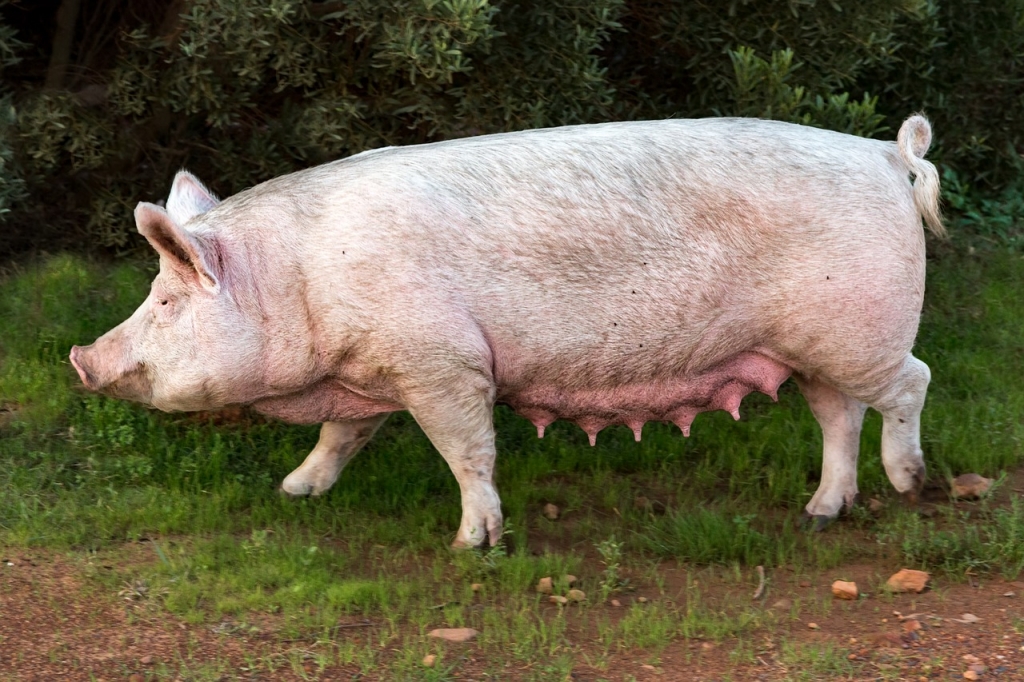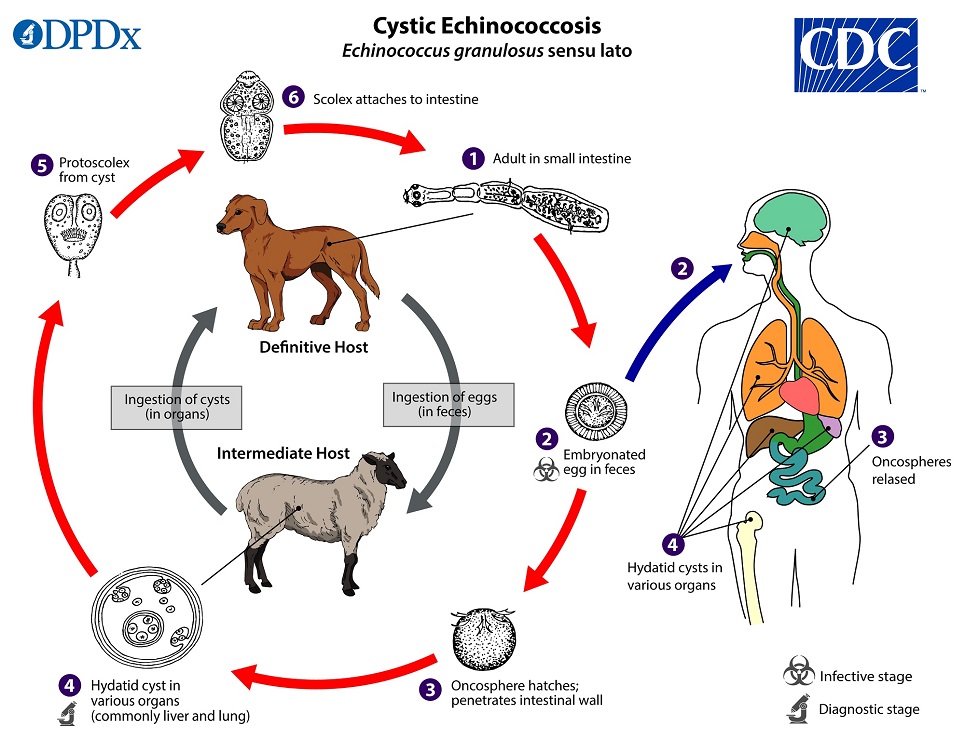Introduction
Abortion means the premature expulsion of dead or non-viable foetus, leading to foetal loss
There is often alarm when an abortion is seen but it should be remembered that there can be loss of embryos at any time during early pregnancy, which often go unseen.
Embryo loss or abortion can be considered in three main groups:
During the period from fertilisation to implantation
During the period of implantation at around 14 days post-service to 35 days.
During the period of maturation, which results in premature farrowing.
Losses can take place at any stage from approximately 14 days after mating, when implantation has taken place, through to 110 days of pregnancy.
Pregnancy is maintained through hormonal changes initiated by the implantation of embryos at day 14. These changes allow the corpus luteum (the body from which the egg is released) in the ovary to develop and produce hormones essential to maintaining pregnancy, such as progesterone. The presence of the corpus luteum is necessary to maintain the pregnancy throughout the whole of the gestation period. The loss or failure of the corpus luteum through any cause initiates the farrowing process, hence an abortion, or if near to term, a premature farrowing.
Natural biological failures of pregnancy occur across all species due to a variety of causes. In healthy sow herds, abortions observed by farmworkers occur in less than 1 out of 100 pregnancies. The cost of an abortion can be calculated quite easily, taking into account the cost of feeding the sow during a pregnancy period and the loss of margin over feed on the loss of the piglets.
Clinical signs
Occurs in breeding female adult pigs (sows and breeding gilts). Usually less than 2% of sows affected. .
Sow may show signs of illness (lethargy; inappetence; diarrhoea/scours) or may be completely normal.
Sows may show clinical signs of a specific disease, e.g. Classical swine fever or Erysipelas.
The delivery of a premature litter with or without mummified pigs.
Mucus, blood, pus discharges from the vulva.
Sow/breeding gilt is not in pig as indicated by occurrence of next heat (most fertile stage of menstrual cycle).
Diagnosis
There are three parts to the investigations that must be carried out:
1 collect information about the individual sows(Sow health history) ;
2 request post mortem examinations and serological tests;
3 assess the clinical evidence and feeding procedures in the herd.
The object of these is to identify the area of failure and by management studies, examination of records, clinical examinations, and laboratory tests, the cause may be identified.
Sow health history
It is important to study the herd history and environment. For example, is there is a seasonal effect or an association with a particular area of the housing or management practice. You should also note the clinical state of the sow at the time of abortion. Does the sow show other clinical signs or is she apparently normal?
You should examine the aborted foetuses too. Are they fresh with no signs of any decomposition, or are they decomposing or mummified? Such observations, particularly if recorded over a period, may be of help to your veterinarian in leading to a possible diagnosis of the cause of the abortion.
Post-mortem and laboratory examinations
Fresh, aborted foetuses should be submitted to a competent diagnostic laboratory where examinations can be carried out for evidence of viral and bacterial infections, together with histological examinations and toxic studies. In many cases the end results of post-mortem and serological tests do not identify any particular infectious organism, which may seem disappointing. However, it is useful in telling us what is not present.
Clinical examinations
Of all the examinations carried out, clinical observations are perhaps the most important. By using the recorded information on individual cases and collating this to the problem group of sows, it then may become possible to differentiate clinically between an infectious and a non-infectious cause.
Causes of Abortion in Pigs
Infectious causes
Infectious agents can bring about abortion in three ways:
1) They can invade the placenta, cause inflammation (placentitis) and sometimes necrosis (tissue death), cutting off the nutrient and oxygen supply to the foetus.
2) They can invade the foetus and kill it.
3) They can multiply elsewhere in the body causing fever and sometimes toxaemia (toxins in the blood).
The major infectious bacterial diseases which spread through herds and cause abortion are brucellosis and leptospirosis. These infectious agents affect increasing numbers of sows in the herd with typical clinical signs of the disease.
There is, however, a second group of bacteria which can be described as opportunist invaders which cause embryo mortality or abortion in individual sows and sporadically in small groups of sows. They do not spread through the herd like brucella or leptospira. They are often mixed infections (i.e. several different species involved). If these opportunist bacterial infections occur in sufficient numbers of sows they can become a herd problem.
They are often normal inhabitants of the vagina or the boars prepuce and their identification following pathological examinations needs careful interpretation. An emerging syndrome in this category occurs when high numbers of bacteria are deposited into the anterior vagina, particularly towards the end of the heat period, by the boar. Such bacteria include klebsiella, streptococci, staphylococci and possibly leptospira. In such cases, careful clinical examination of sows between 14 and 21 days post-mating will sometimes reveal a tacky discharge on the vulva, which may not necessarily be very obvious. Such sows should be identified, and if they are returning out of cycle, it is likely that embryo loss is taking place.
Examples of infectious diseases that can cause abortion:
Influenza virus.
Leptospira.
Specific bacteria, e.g. E. coli, klebsiella, streptococci, pseudomonas.
Parasite burdens.
Cystitis, nephritis.
Non-infectious causes
Seasonal infertility
Experiences have shown that 70% of all abortions fall into this category. Abortions, anoestrus and sows found not in pig commonly occur during the period of summer infertility when sunlight is intense and the weather is hot. Ultra violet radiation may also cause regression of the corpus luteum particularly in white breeds. This is particularly evident in outdoor sows where levels of pregnancy failure may reach 15-30%. In such cases the abortions are so early that the foetuses are either not seen or there is progressive embryo mortality and a delayed return to oestrus. This is well recognised with summer infertility and the autumn abortion syndrome, where environmental factors are likely to cause the corpus luteum to fail.
2) Decreasing daylight length, poor lighting
To maintain a viable pregnancy requires constant daylight length. Ideally this should be 12-16 hours per day. Light intensity experienced by the sow can be affected by a number of environmental inadequacies, for example, poor lighting in the first place, followed by fly faeces and dust on lamps gradually reducing the availability of light. High walls surrounding animals, or automatic feeders in front of sows produce shadows. A simple tip here is to make sure that you can read a newspaper in the darkest parts of the building at sow eye level. If not, then problems may start. Painting the roofs and walls white to increase the reflection of light is one way of improving the environment and on a number of occasions abortions have ceased after such simple improvements.
3) Low temperatures, chilling, draughts
Wet, damp environments or high air movement cause chilling and increase demands for energy. An important feature of environmental abortions is that the sow remains normal, often eating feed in the morning, and expelling the litter in the afternoon.
4) Poor nutrition
If the metabolism of sows are allowed to progress to a negative energy or catabolic state so that they are having to use their body tissues to maintain the energy equilibrium, then individual susceptible animals may abort. Clinical examinations will identify possible changes in the environment. For example, the removal of bedding, poor quality feeds, or a drop in feed intake. The latter may simply be associated with a change in stockworkers. Outbreaks of abortion may occur when there are changes from pellet feeding to meal feeding, or where feed is presented by volume and not by weight. The aborted foetuses are perfectly normal and the sow shows no signs of illness. The underlying initiating mechanism is regression of the corpus luteum.
4) Mouldy feeds
Toxins from mouldy feed can cause abortions. The fungus can be at a low level in one of the feed constituents and barely detectable by visual examination and yet produce powerful toxins. These when ingested have toxic effects which may cause abortion. This form of fungal poisoning is called mycotoxicosis. The fungus may also be readily seen growing as a mould in feed lines, bags of feed or wet feed systems and their distributing vessels and pipes.
5) Stress
Bullying and fighting are often forgotten as predisposing factors of stress in individual sows.
6) No boar contact
The presence of the boar and his pheromones (male chemical hormones) . Pheromones are required to maintain pregnancy in individual susceptible disadvantaged sows.
7) Lameness
Lameness and pain, particularly from abscesses in the feet or leg weakness (osteochondrosis) can also cause the corpus luteum to regress due to stress.
Treatment and management
Records help to identify reproductive problems. These should include information on:
Age (or parity) profile of the herd.
Sow number.
Feed and amounts given.
Clinical observations of the sow and any disease history.
Boar used during mating; date of service.
Failure to come on heat.
Date of abortion and condition of aborted piglets.
Culling rates.
Bleeding and discharges from the vulva.
Lameness.
Litter sizes.
Mastitis, lack of milk, swollen udders.
Deaths and their likely causes.
Poor conformation.
Feed
Increase feed intake from days 3 to 21 after mating.
Heat and light management
The outdoor breeding female should always be derived from at least one pigmented parent.
Provide extensive shades so that the sows can protect themselves from the sun.
Site the arks in the wind direction so that with open ends cooling can take place.
Provide extensive well-maintained wallows suitably sited so that sows do not have too far to reach them.
Contact with the boar
Boar presence in the dry sow accommodation is recommended from the day of service through to the day of farrowing. The boar should be mixed in or have access to the group for at least the first 21 days of pregnancy. There is clear evidence that this will improve farrowing rates particularly if they are associated with summer infertility. If sows are individually housed the boar should be allowed to move down the passages and make social contact daily.
Increase the mating programme by 10-15% over the anticipated period of infertility.
Because boar semen can be affected follow each natural mating 24 hours later by purchased AI.
Mycotoxin management
Are the bags of feed kept in a dry cool or wet warm place?
Are you ever tempted to give feed to sows that has been slightly moody?
Most importantly, contact your Veterinarian anytime a gilt or sow abort






